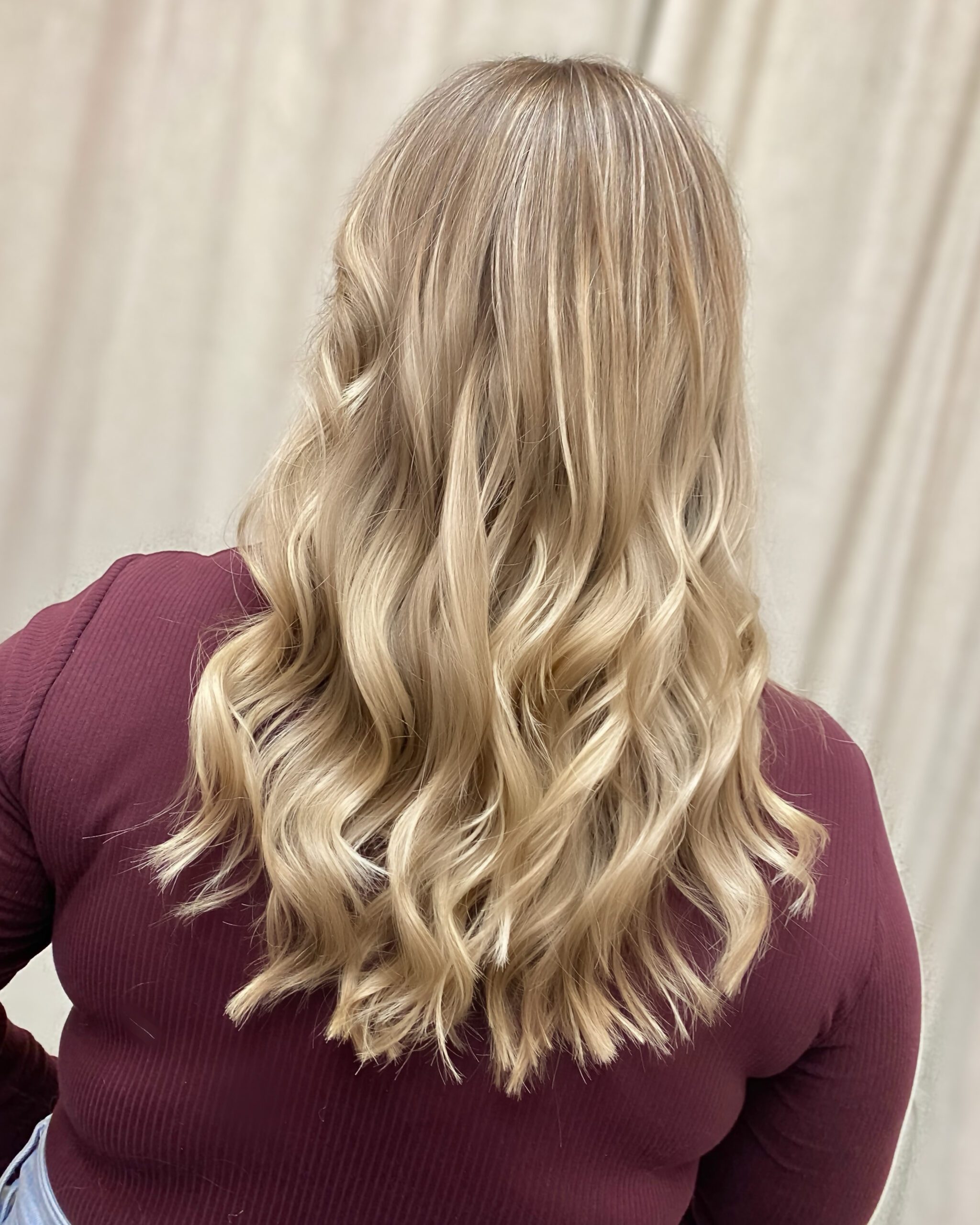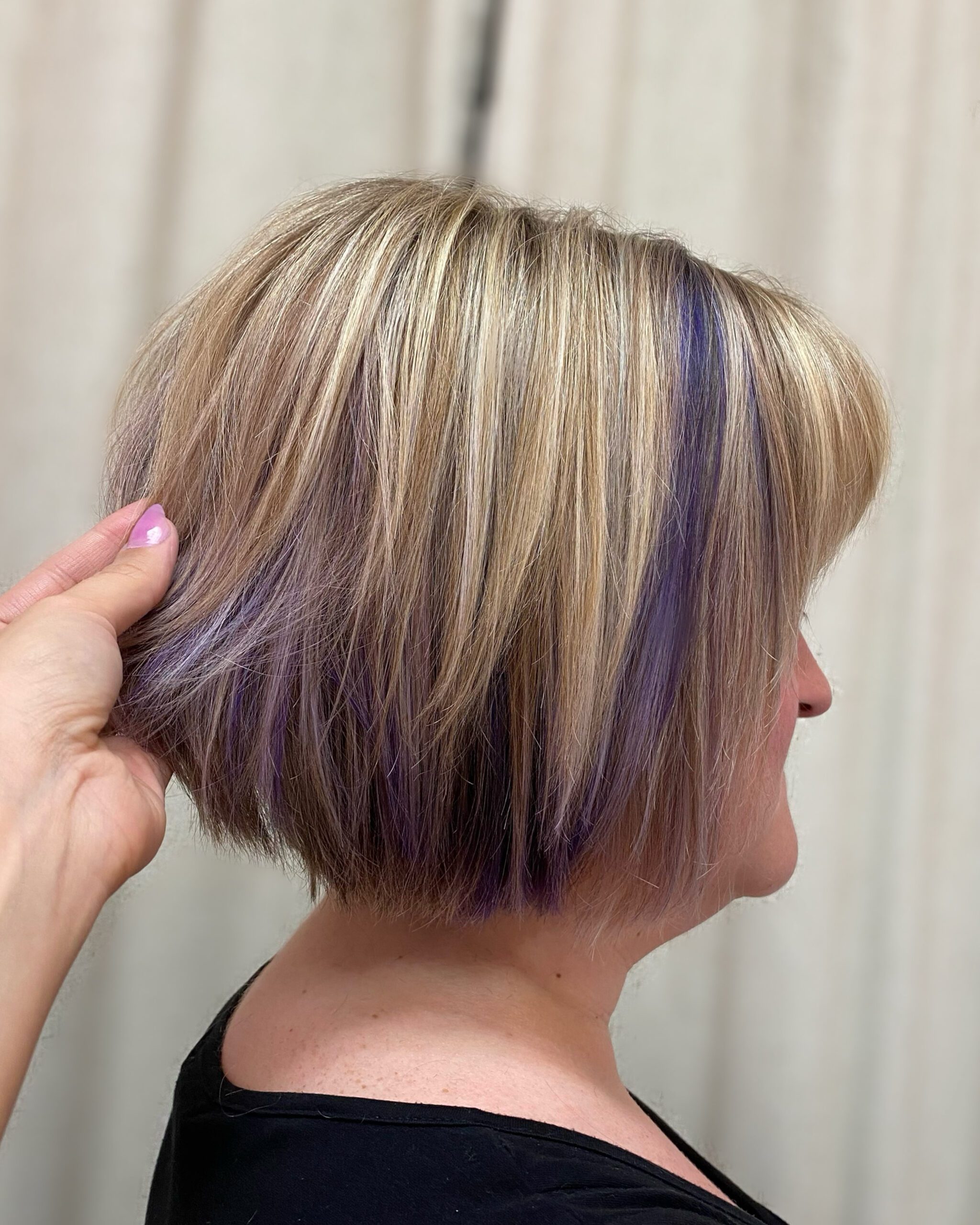
Everything You Need To Know About Traditional Highlights
If you’re just learning about hair color, then you may not be aware that there are a variety of different types of highlighting techniques. Ultimately, this is the reason why highlights and hair color in general is so expensive these days. In this post I’m going to explain everything you need to know about traditional highlights, and what sets them apart from the newer highlighting techniques.

While there are tons of different highlighting techniques out there, traditional highlights will always have a a place in the hair coloring world. As you’ll read further down, I explain 4 different situations where I STILL choose traditional highlights over any other highlighting technique.
What are traditional highlights?
Traditional highlights are referring to the most classic highlighting technique. This technique involves highlighting the hair by weaving or slicing 1/8″ sections, applying lightener (bleach) into a foil up to the scalp, and repeating the process for the entire head.
The client is usually sat underneath a hooded dryer to process, and then the hair is rinsed and sometimes not even toned. While this is great for a traditional look, hair color has become much more extensive and customized than this classic service today.
What is the difference between traditional highlights and balayage?
So now that you’ve got a general idea of what traditional highlights are, let me explain some of the other types of highlighting techniques out there.
Balayage highlights are applied by painting the hair with a clay lightener in sweeping movements. The hair is not put into foils, and the hair may process in open air or under plastic wrap. This produces a much more sun-kissed and warm effect on the hair than traditional foil highlights does. Read more about balayage here.
Teasy lights are more similar to traditional highlights because foil is used, but the difference is that the hair is teased before it is placed into a foil. This produces a more blended effect at the root while still giving the same lifting effects of traditional highlights. Read more about teasy lights here.
And air touch highlights are the most similar to traditional highlights because they are painted close up to the scalp and placed in foils. The difference is that instead of weaving the section out with a rat tail comb, the excess hair is blown out with a blow dryer. This gives an even more blended and natural effect to the traditional highlight technique. Read more about air touch highlights here.
The pros
There are definitely a number of pros to still using this classic highlighting technique. For one, the lift that you get will typically be significantly more than other highlighting options, especially balayage. This will give you the option for cooler toned blonde highlights versus warm and potentially brassy highlights.
It’s also much faster to apply traditional foils than it is to do one of the newer techniques. And in the hair industry, time is money. If you can apply these foils faster and get the client out twice as quickly, you have the potential to see a lot more clients in a day.
These highlights also allow you to avoid a “rooty” look if that’s now what you’re going for. This technique allows you to brighten the hair all the way up to the scalp, while the other techniques typically keep the hair near the root a darker or natural color.
The cons
Now that we’ve discussed the positives, it’s time to talk the negatives. For one, these highlights aren’t very customizable. This means that you’ll likely end up with a very basic look opposed to something more dimensional and lived-in.
Traditional highlights also grow out pretty poorly if not combined with a root smudge or root shadow. There will be a harsh line from where the highlight touches the natural color. And a root shadow is essentially a darker toner that will marry the natural color into the blonde highlights. This is an entire second process, so it does add time onto the service if it’s needed.
So since it doesn’t grow out well, this means that you’ll need to come in more frequently with a traditional highlighting service. This can end up costing you more in the long run, because you’ll need to head to the salon twice as frequently.
When to use traditional highlights
Typically I like to use traditional highlights on clients that are predominantly blonde. This is still a great option for those that don’t want a lot of dimension and like to stay light and bright without a “rooty” look.
I also like to use this technique for gray blending services. Classic highlights work well when you’re just trying to take some of the harshness off of a silver gray color.
This technique also works well if you’re simply using the highlights to add volume and body to the hair. In this case, you definitely want the foils to the scalp so that you can get as much lift as possible towards the root area.
And lastly I still use traditional highlights when I’m in the process of lightening a dark hair color out of the hair. Ultimately this is a good technique to gradually break through previous hair color in a gradual fashion. Read more here about removing old hair color.
How to do traditional highlights
If you’re interested in learning how to apply traditional highlights, watch my Youtube video below:
**Since I’m sharing the products that I love to use with you guys, this page includes affiliate links to these products. If you take action and purchase a product through clicking one of my links, I’ll make some commission money from it at no extra cost to you. This enables me to be able to continue giving you awesome hair tips, so thanks! **
Below I’ve listed some tools you’ll need for highlighting the hair.
- Highlighting Combs
- Color Brush
- Small Foils
- Large Foils
- Purple Shampoo
- Purple Conditioner
- Detangling Spray
- Detangling Brush
- Boar Round Brush
- Dyson Hair Dryer
Conclusion
Traditional highlights are the original, classic highlighting technique used in the salon.
They’re performed by weaving or slicing the hair, placing a foil all the way up to the root, and applying your lightener. This is not to be confused with balayage, teasy lights, or the air touch highlighting techniques.
Traditional highlights are great for giving a bright and light look, especially towards the root of the hair. The highlights not only take less time to put in, but they will give you a cooler toned look than some of the other, newer highlighting techniques.
The cons to classic highlights are that they don’t grow out very well. The hair doesn’t blend well into the natural color without a root smudge, and you’ll typically need to visit the salon twice as frequently than with other techniques.
I still prefer to use traditional highlights on blondes, gray blending, those looking to add volume, as well as to lighten up darker hair color.
Leave me a comment to let me know what questions or comments you have! And make sure to subscribe if you want to make everyday a good hair day!


